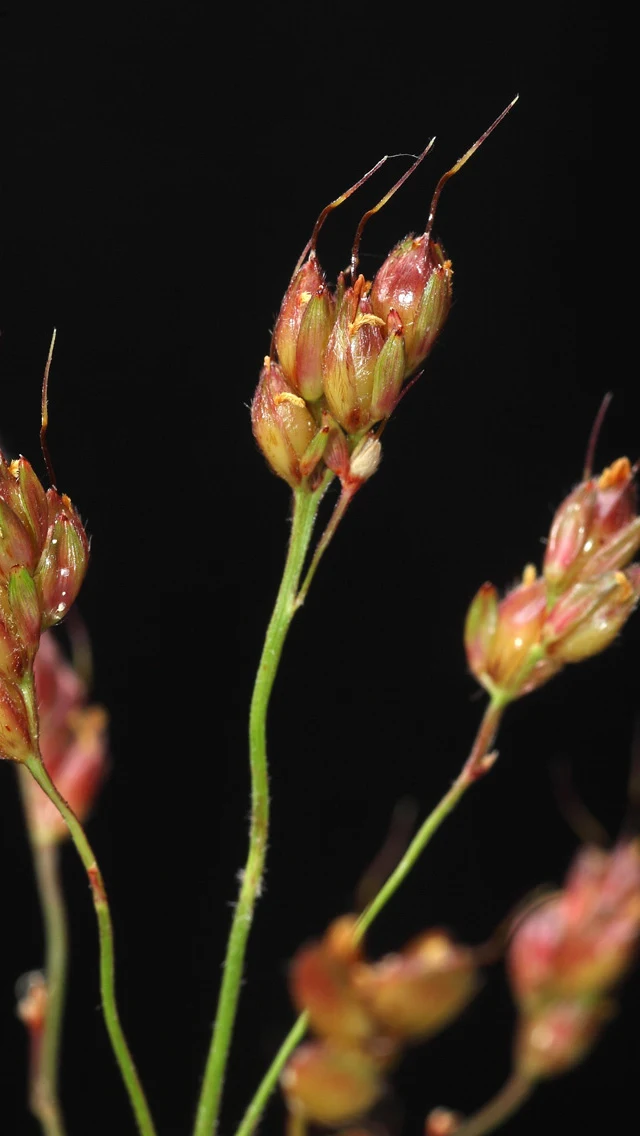
Sorghum (volunteers)
Sorghum bicolor
Auricles
Absent.
Importance
Cultivated sorghum, sorghum bicolor, is grown in the UK as game cover due to its dense tall foliage. Dwarf varieties are also grown for their standing power. In parts of Africa and Asia sorghum is cultivated on marginal soils as grain for food and the straw for use as fodder and feed. In other countries grown as a forage crop or for ethanol production.
The related species Johnson grass is native to the mediterranean region and is known worldwide to be an invasive and competitive weed especially in warmer climates.
Ligule
Membranous and rounded 2-4 mm. (Ligule of johnson grass, Sorghum halepense, is up to 5 mm long.)
Description
Sorghum is a vigorous 'cane-like' grass and most cultivators are annuals. It can grow to a height of 50-100 cm tall. The panicle has a central flowering shoot with several branches bearing groups of spikelets with distinctive dense particles. The grains are small (3-4 mm in diameter) and variable in colour depending on variety.
Johnson grass is a perennial rhizome-forming grass of warmer zones which can reach a height of 200 cm.
Leaf blade
The coarse dull green leaves are long and 'maize like', overlapping, encircling the stem, with short white hairs at the base. The leaves arise from the central stem. (The leaf blade of johnson grass, Sorghum halepense, has a leaf blade which is smooth, with a distinctive light middle nerve.)
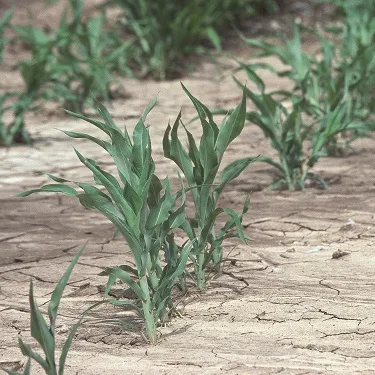
Sorghum young plants.
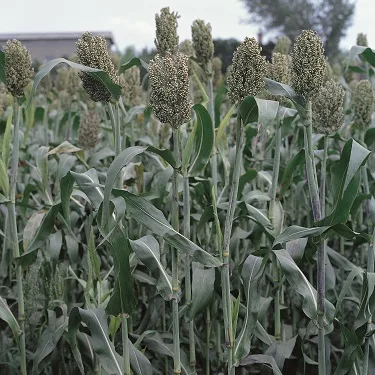
Sorghum flower heads.
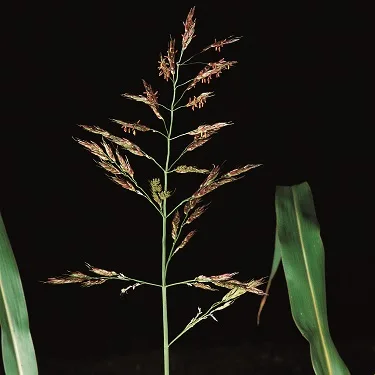
Johnson grass flower head.
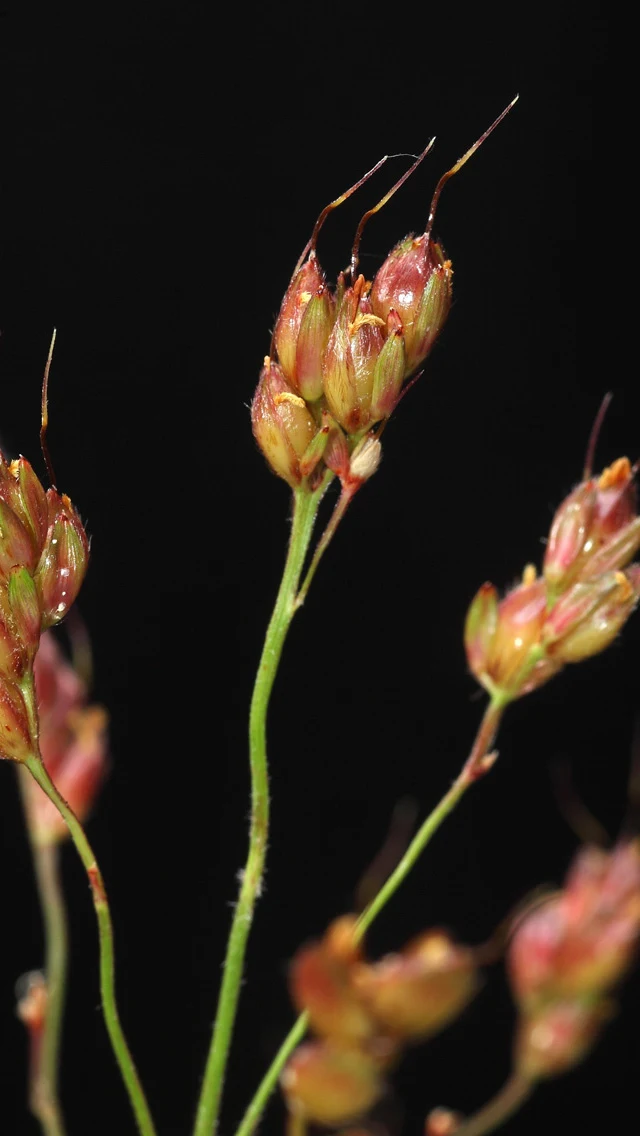
Sorghum spikelets. © Blackthorn Arable.
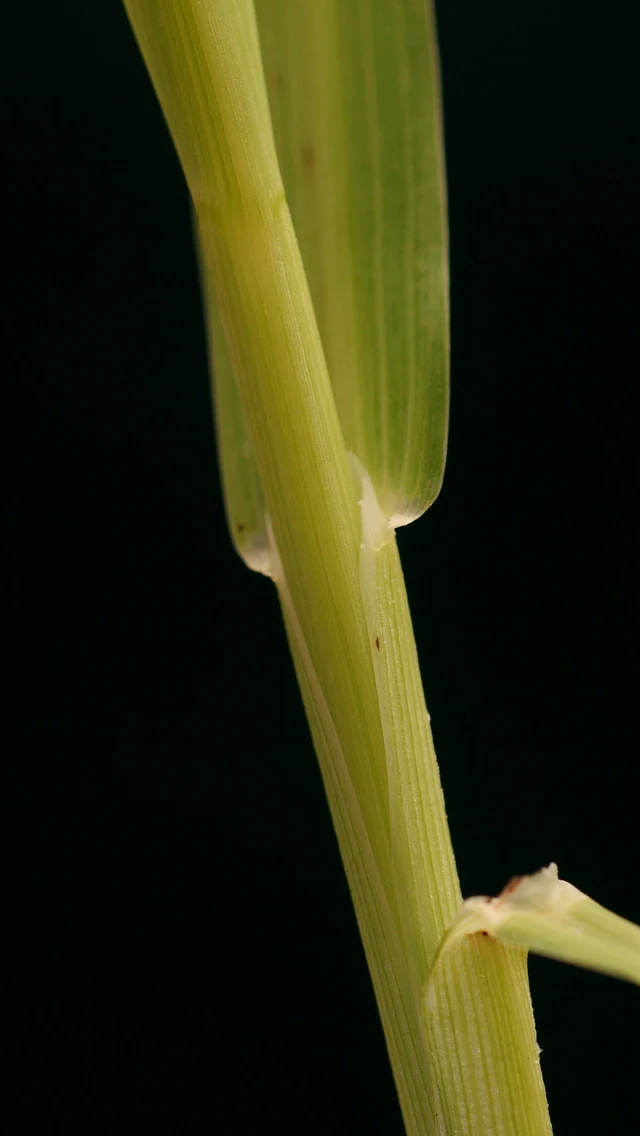
Sorghum ligule. © Blackthorn Arable.
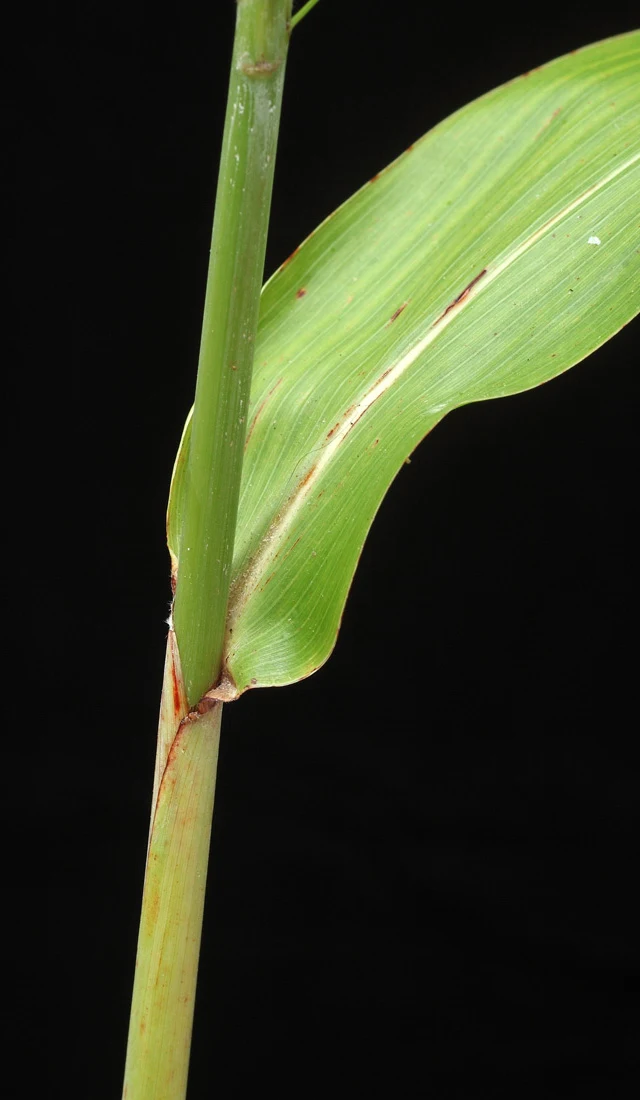
Sorghum ligule. © Blackthorn Arable.

Sorghum young plant. © Blackthorn Arable.


